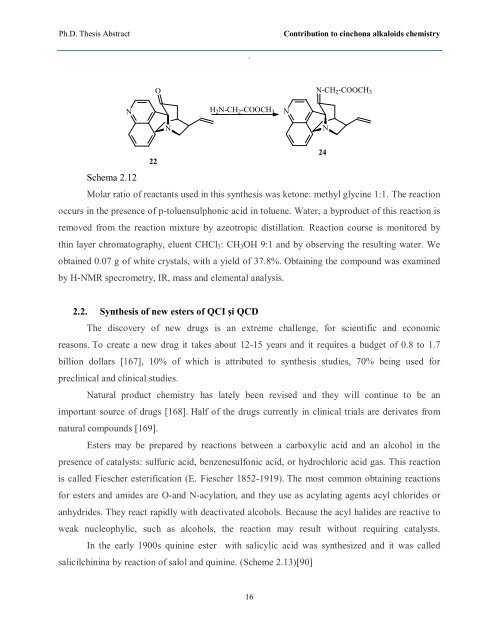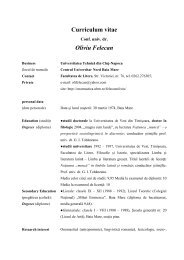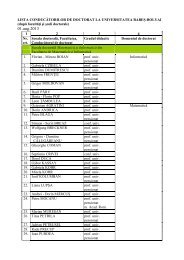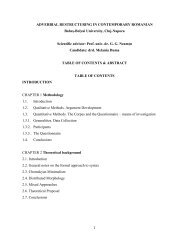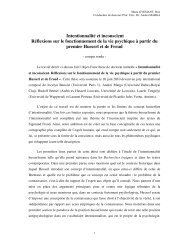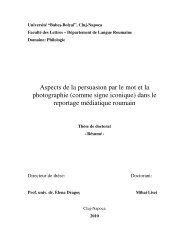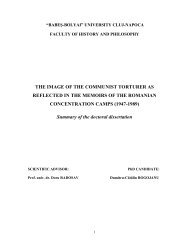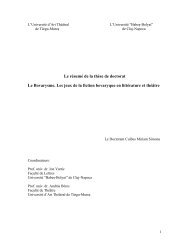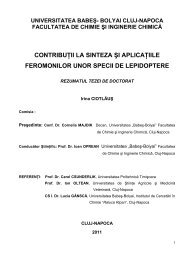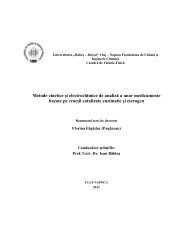CONTRIBUTION TO CINCHONA ALKALOIDS CHEMISTRY
CONTRIBUTION TO CINCHONA ALKALOIDS CHEMISTRY
CONTRIBUTION TO CINCHONA ALKALOIDS CHEMISTRY
Create successful ePaper yourself
Turn your PDF publications into a flip-book with our unique Google optimized e-Paper software.
Ph.D. Thesis Abstract Contribution to cinchona alkaloids chemistry<br />
N<br />
Schema 2.12<br />
22<br />
O<br />
N<br />
H 2N-CH 2-COOCH 3<br />
.<br />
16<br />
N<br />
N-CH2-COOCH3<br />
Molar ratio of reactants used in this synthesis was ketone: methyl glycine 1:1. The reaction<br />
occurs in the presence of p-toluensulphonic acid in toluene. Water, a byproduct of this reaction is<br />
removed from the reaction mixture by azeotropic distillation. Reaction course is monitored by<br />
thin layer chromatography, eluent CHCl3: CH3OH 9:1 and by observing the resulting water. We<br />
obtained 0.07 g of white crystals, with a yield of 37.8%. Obtaining the compound was examined<br />
by H-NMR specrometry, IR, mass and elemental analysis.<br />
2.2. Synthesis of new esters of QCI și QCD<br />
The discovery of new drugs is an extreme challenge, for scientific and economic<br />
reasons. To create a new drug it takes about 12-15 years and it requires a budget of 0.8 to 1.7<br />
billion dollars [167], 10% of which is attributed to synthesis studies, 70% being used for<br />
preclinical and clinical studies.<br />
Natural product chemistry has lately been revised and they will continue to be an<br />
important source of drugs [168]. Half of the drugs currently in clinical trials are derivates from<br />
natural compounds [169].<br />
Esters may be prepared by reactions between a carboxylic acid and an alcohol in the<br />
presence of catalysts: sulfuric acid, benzenesulfonic acid, or hydrochloric acid gas. This reaction<br />
is called Fiescher esterification (E. Fiescher 1852-1919). The most common obtaining reactions<br />
for esters and amides are O-and N-acylation, and they use as acylating agents acyl chlorides or<br />
anhydrides. They react rapidly with deactivated alcohols. Because the acyl halides are reactive to<br />
weak nucleophylic, such as alcohols, the reaction may result without requiring catalysts.<br />
In the early 1900s quinine ester with salicylic acid was synthesized and it was called<br />
salicilchinina by reaction of salol and quinine. (Scheme 2.13)[90]<br />
N<br />
24


